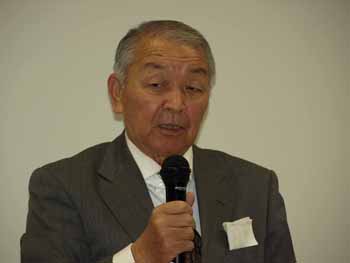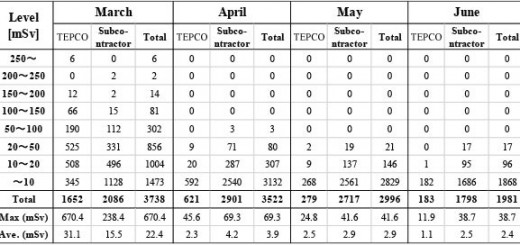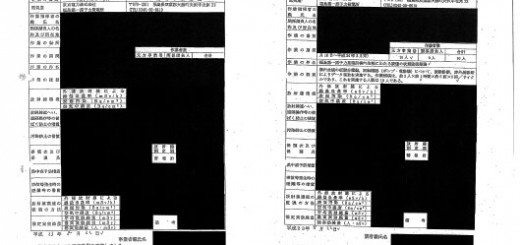Ryusuke Umeda Lodges Historic Workers’ Compensation Claim Nuke Info Tokyo No. 135
 |
| Workers’ compensation applicant Ryusuke Umeda: Photo of by Kenji Higuchi |
Thirty years ago Ryusuke Umeda was exposed to radiation while working at the Shimane and Tsuruga nuclear power plants. In September 2008 he applied for workers’ compensation for myocardial infarction and in February this year he caught an all night bus to Tokyo from Fukuoka City on the island of Kyushu to present his case directly to the Ministry of Health, Labour and Welfare (MHLW).
In most nuclear-related workers’ compensation claims, relatives have applied after the person in question has passed away. The only other cases we are aware of where people applied on their own behalf were Kazuyuki Iwasa (1975) and Mitsuaki Nagao (see NIT 131,130, 127, 125, 99). As far as we are aware, Ryusuke Umeda was the first person ever to present his case in person to MHLW. His visit to the MHLW was, therefore, a historic moment.
Umeda did welding work to fix lead plates of nuclear reactor cores. He spoke in detail about the work environment at Tsuruga and demanded a review of the circumstances of his exposure at that plant. He explained how often his radiation alarm would go off as soon as he entered the work site. His facemask would fog up from the heat, so that he couldn’t work unless he removed it. The readings on his whole body radiation counter were very high, but the work had to be completed within the time allocated for the periodic inspection.
MHLW took very seriously the fact that he came to present his case in person and promised to investigate his claim, including exposure that was not recorded in his radiation control handbook.
We confirmed with MHLW that myocardial infarction is recognized as a condition that can be caused by radiation exposure and that it is listed as an atomic bomb-related disease.
We were informed that there were seven applications in 2008 for workers’ compensation for radiation exposure to nuclear industry workers (one each from people living in Hokkaido, Hyogo, Shimane, Nagasaki and Miyazaki Prefectures and two from Fukui Prefecture). This was the first time we knew that there had been seven such applications in a single year. This information had never been disclosed before. We hope to trace how many applications there have been, how many were approved, the relationship between the number approved and the number of cases considered by review committees and so on.
In regard to applications for and approval of radiation-related workers’ compensation for nuclear industry workers, MHLW used the Privacy Act as an excuse not to disclose details such as the name of the condition and the dose. All it disclosed was the number of cases. Given that MHLW’s role is to protect the health of workers and citizens, ascertaining the health effects to workers in specific industries and disclosing this information is an important task that MHLW should carry out. MHLW’s response in this case completely distorts the meaning of the Privacy Act
Multiple myeloma and malignant lymphoma (non Hodgkin) were added to the list of radiation-induced conditions eligible for workers’ compensation under article 35 of the implementing ordinance of the Labor Standards Act (NIT 131). We have strongly demanded that, instead of the current system of adding recognized conditions to the list, all conditions that have been recognized as radiation-induced conditions (including those recognized overseas) should automatically be recognized for workers’ compensation.
In Europe and the US most cancers are recognized for workers’ compensation purposes. By comparison, Japan’s system is a half a century out of date.
Another problem is that if NGOs approach MHLW directly we are ignored. If we don’t go through a Diet Member we receive no reply. There is a whole host of problems related to radiation-related workers’ compensation for nuclear industry workers. We have to pursue these issues with great persistence.
Mikiko Watanabe (CNIC)


